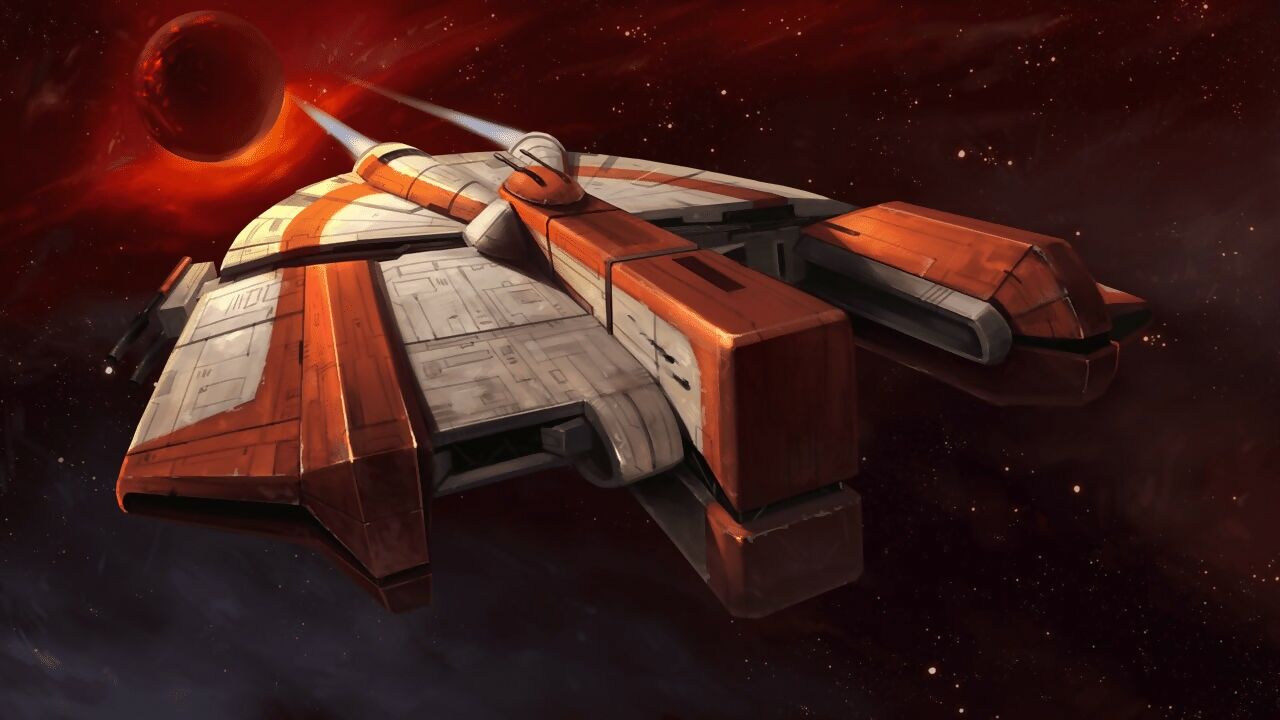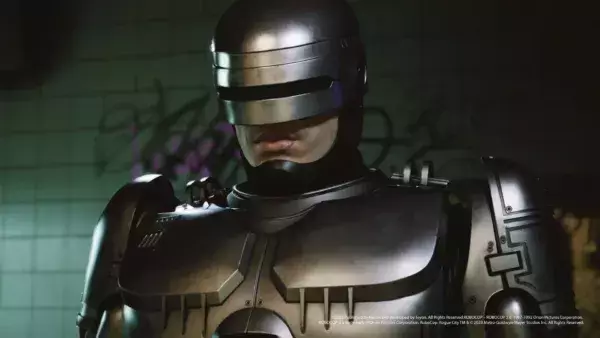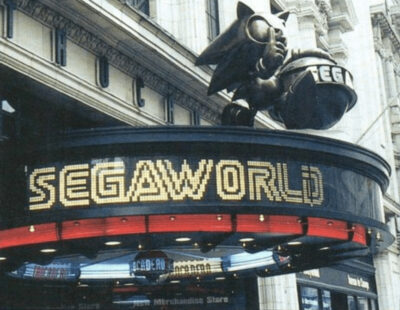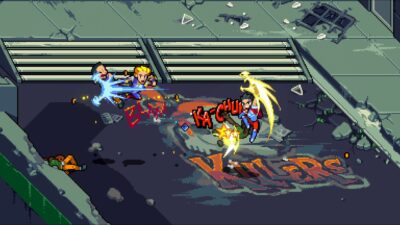
From their earliest beginnings, video games have realised a specific human fantasy: to go into space. Spacewar! led to Space Invaders led to Elite led to… you get the picture.
But something was missing from those early gaming experiences – the quiet moments depicted in TV shows and movies set in space. Think of R2-D2 and Chewbacca playing Dejarik on board the Millennium Falcon; Shepherd Book and Jayne being workout buddies on Serenity; trying to figure out how the turbolifts worked in Star Trek: The Next Generation.
These parts of the sci-fi experience always seemed a little out of reach when replicated in games. Star Trek: Voyager – Elite Force and its sequel had downtime sessions aboard your ship between missions, Wing Commander had you clumsily navigating the Tiger’s Claw (and spending a lot of time in the bar), and the Ragnarok of Final Fantasy VIII acted pretty much as a reskinned airship.
Those games made an effort, but they seldom felt like spacefaring homes shared between you and your crewmates or friends.
That all changed, though, with Star Wars: Knights of the Old Republic. KOTOR saw your missions – and most of your in-game experiences – starting from one place, the good ship Ebon Hawk. This progenitor of the Millennium Falcon acted as canonical transport, an in-game hub, a place to figuratively put up your feet and get to know your rag-tag band of Carths and HK-47s. It managed to feel, somehow, like a home – and the game was all the better for it.
The Ebon Hawk also served a practical purpose. In a way that echoed sci-fi TV shows’ use of ‘bottle episodes’ to keep production costs down, using the ship as the backdrop for cutscenes meant the same environment and props could be used multiple times throughout the game.
Ships of the Line
Since the Knights of the Old Republic games, the spaceship hub model has been imitated and developed further. After codifying the concept in KOTOR, BioWare went on to refine it with the Normandy SR-1, SR-2, and the Tempest in the Mass Effect franchise. After working with the Ebon Hawk in KOTOR II, Obsidian introduced players to the good ship Unreliable in The Outer Worlds.
Possibly the largest ship in the genre is the expansive Sanctuary III for Borderlands 3, which features an expansive bridge as well as its own bar, gun shop, and individual quarters for all four player characters and several NPCs. Even Call of Duty got in on the act with the Retribution in Infinite Warfare, demonstrating that the appeal of having your own spaceship home isn’t restricted to RPGs.
“At the start of Borderlands 3, we knew that one of our biggest goals was to expand our universe and leave Pandora,” says Graeme Timmins, creative director at Gearbox. “To help sell that promise, to go to new planets and explore more of the Borderlands, we just naturally needed a ship to do that.”
The ship is more than just a form of transport, however, he adds. “From a gameplay perspective, Sanctuary speaks directly to the RPG side of our looter shooter. It’s the place where players manage the inventories, begin and turn in missions, reflect on their accomplishments, and plan out their activities. When it comes to storytelling, it’s where a lot of important story moments happen [as it] ferries players though our expanded universe of planets and locations.”

Borderlands III’s Sanctuary III prompts the question: what happened to Sanctuary II? We don’t talk about that, apparently.
The role of the Sanctuary III expanded as the story and world of Borderlands 3 grew: “As the story developed, we also recognised we were going to have a lot of characters that we were going to need to interact with, and instead of travelling between planets, it just made more sense to have those characters close by,” Timmins says.
“It’s also convenient to have a hub like Sanctuary III where so many game mechanics are always a single teleport away. Things like the Crew Challenges, Hunts, Targets of Opportunity, as well as vending machines and slot machines. Finally, we want every part of our game to exude character, and the ship was another great opportunity to do that.”
Leaf on the Wind
There’s obvious cross-pollination between these ships, with a couple of developers even repeating their most successful tricks, but the similarities between spaceships are also due to the common pool of influences they draw from.
“Going into the Unreliable’s design, I began researching a number of ships from film and television,” says Scott Hafner, a designer on The Outer Worlds. “Which was great for me, because it gave me an excuse to dive into three of my favourite films and shows.”
For Hafner, the three biggest influences on the Unreliable were the Serenity from Firefly, the Nostromo from Alien, and the Millennium Falcon from Star Wars. It’s a list Timmins is familiar with as well.
“When it came to inspiration for Sanctuary III, I drew a lot from the Nostromo in the Alien movie,” he says. “That iconic ship, and entire film, really, established such an approachable view of how the future of space travel might look, by keeping it grounded and relatable. We also drew inspiration from ship designs in Star Wars and Firefly as well.”

Every ship exterior has to reflect the look and personality of the interior, like here in Mass Effect Andromeda.
“For the Serenity, the level of technology closely matched our desired look for the Unreliable, the bridge for example aboard the Serenity is beat up, it has lots of exposed wiring and cables, and a mass of switches and flashing lights that really scratches that sci-fi itch for me,” Hafner adds. “Being a huge fan of the Alien film, naturally I researched the Nostromo’s layout as well.”
While the Nostromo’s layout differs from the Unreliable quite a bit, there are common design touches such as the kitchen being a central area for the crew and there being one long central corridor that stretches the length of the ship.
“With the Millennium Falcon, it was more about where the crew’s bunks were in relation to their social space,” Hafner says. “And of course the famous holographic board-game gave me some ideas [about] littering the Unreliable with playing cards and board games of our own.”
This ‘lived-in’ quality, heavily inspired by Star Wars, is a common theme throughout these ships.
“We really wanted to make sure that while we were in a spaceship, which is inherently high-tech, it still matched the worn-down world that we’ve built Borderlands around,” Timmins says. “That meant making sure the space looked functionally correct, but also had those personal touches and details that make you believe people lived there. In the centre of the ship, we have the high-tech engine, but you also have the bunk beds and makeshift NPC quarters nearby.”
Explore the Tempest in Mass Effect: Andromeda and you’ll find empty glasses, or see tools and lab equipment left out. The spaceship hub has recently emerged in the Star Wars franchise again, with the Stinger Mantis in Star Wars Jedi: Fallen Order. With an interior very reminiscent of the Falcon, the Mantis also has bowls of fruit, musical instruments, and potted plants scattered across the ship, again to give that ‘lived-in’ feel.

The Outer Worlds’ concept artist Bobby Hernandez designed the Unreliable’s crew quarters to reflect the personality of your companions.
“Visual storytelling is a powerful tool in situations like this,” Hafner says of the Unreliable. “In the kitchen, for example, we created assets that would reflect that people are living here. Board games are strewn across tabletops, empty glasses and dirty dishes are laying about, playing cards are thrown about next to empty alcohol bottles. The cargo bay is overflowing with stacks of crates and unkempt collections of goods piled throughout. These items that are left around help to convey a sense of usage and an overall messy-but-homey personality to the space.”
You Came in That Thing?
’Personality‘ is the key word here. In the stories that inspire these games, the hero ship is often referred to as another character. But where a lot of games that use spaceships as their home base allow the player to customise every detail of their character’s appearance, they rarely give them free rein when it comes to interior decorating.
This makes sense, unlike in a space sim, where the spaceship is the player’s in-game avatar, a travelling hub is designed to be an environment that tells part of the story, and communicates a character of its own. It’s a reflection of the design seen on spaceship sets in movies and TV – details like the ‘used’ look of the Millennium Falcon, or the flowers painted up the wall of Serenity’s kitchen, give us an insight into the crew, as well as the universe they inhabit.
“If I had to describe Sanctuary III’s personality, I’d have to say it’s plucky,” Timmins says. “It’s that person in your life that might have faced some hardships, but instead of being down, it soldiers on, happy to meet each day and adventure. It’s not a perfect or new ship, but it’s been lovingly watched over and pulled together by Ellie. This vibe of taking the broken, putting it together, and restoring its function in some way is a big part of all the designs you’ll find in Borderlands.”
This character isn’t always incidental – it can strike powerful emotional notes with the player. Knights of the Old Republic II opens with the player inside the burning wreck of the ship from the first game, a deliberate decision to communicate that something pretty dark and dangerous had happened, while also flagging the change in tone from the first game to the second.
Mass Effect 2 goes even further, opening with the total destruction of the Normandy SR-1 that players had come to know so well during the first game. The bigger, meaner replacement, built by the enigmatic Cerberus organisation, spoke volumes about the new kind of mission Shepard would be undertaking. The changes needn’t always be so drastic, however.

Spaceship hubs offer an essential place for the whole crew to get together.
“We knew the companions were going to get their own rooms aboard the Unreliable, and we wanted those rooms to feel lived-in, to feel used and occupied,” Hafner says. “And we thought a good way to do this was to fill them up with items and collectables that the companions themselves, or players, have brought on board. We created numerous art assets based on our narrative designers’ takes on the companions’ interests.”
For instance, when you welcome Felix, a huge sports fan, on board, you’ll notice that he has a Tossball stick and Tossball posters hanging up, or when the mechanic, Parvati, comes aboard, her once empty room is filled to the brim with tools, some photos, and plants. In the same way, the player’s own quarters will change according to their actions.
“The player’s quarters will slowly fill up with trinkets and memorable items from their adventure,” Hafner points out. “When a quest of significance is completed, we may populate that room with a memento of something the player would have seen or engaged with during that quest.” Borderlands 3 operates similarly, filling the Sanctuary III with allies, hunting trophies, and even lore-plugging audio logs.
Motley Crew
While decoration and environmental storytelling are essential for creating atmosphere, it’s the crews of these ships that make them feel like a home.
While Star Citizen boasts fully realised spaceship interiors, and No Man’s Sky lets you command your own massive space freighters crewed by anonymous aliens, without the dirty dishes, personalised rooms, and staged interactions between the NPCs these can feel sterile, or like they stop existing the second the player character steps out of the air lock. With RPG spaceship hubs, however, you can often feel like you’ve walked in on a conversation that began while you were out exploring a planet.
“We knew early on we wanted the companions to take on a life of their own once set free on the ship, and we wanted to showcase the fact that this is now their home as well, and they should appear settled in,” says Hafner.

Toilets have no gameplay function, but are essential for making the ship seem like home.
“The companion events aren’t meant to be over the top, they’re meant to be normal activities that people would take part in. Simple things that folks would do while living in a space like this, sharing a drink together, talking about last night’s show, or fighting over the bathroom are simple yet subtle activities for the companions to show that this is now their new home together.”
“Having NPCs milling about, making small talk with you, really helps you believe that this ship is alive, and not just another level in the game,” Timmins says.
Similarly, in Mass Effect: Andromeda we can read the messages the crew leave each other on the noticeboard, and an entire side mission is devoted to arranging and getting snacks for the crew’s movie night. It’s a trope that goes all the way back to Knights of the Old Republic II: as you walk around the ship, you’ll find characters performing maintenance, or just meditating by the ship’s bunks.
These touches are what really hammer home the immersion in a way games that avoid the hub aspect of a spacefaring vessel just can’t manage. Void Bastards, for instance, moves the player between levels in a spaceship the player uses to select their next destination, craft new equipment, and set up their loadouts for the next mission, but it’s little more than a good-looking set of menu screens.
Similarly, The Long Journey Home sees its crew interact with each other, but the various rooms of the ship are represented by animated images and menu screens – a nod to Wing Commander, whether intentional or not. Using a menu gets the job done, but it’s creating a space for the player in the game world that provides a real grounding in the universe. “Having the Unreliable be a physical space and not just a menu item was really important to us,” Hafner says.
“There’s something satisfying about being able to grab a chunk of the game world and call it your own.”






1 Trackback or Pingback